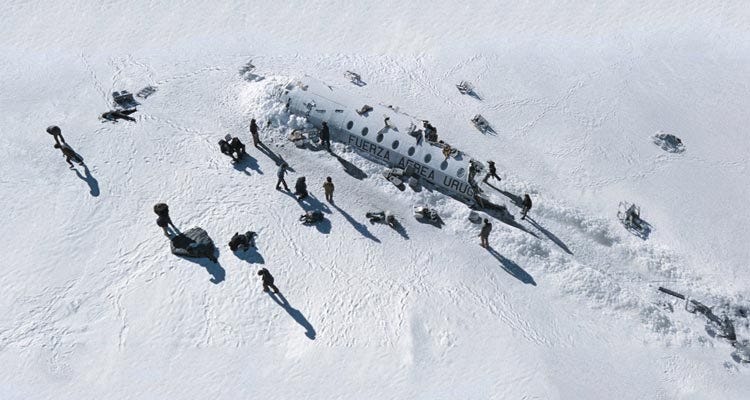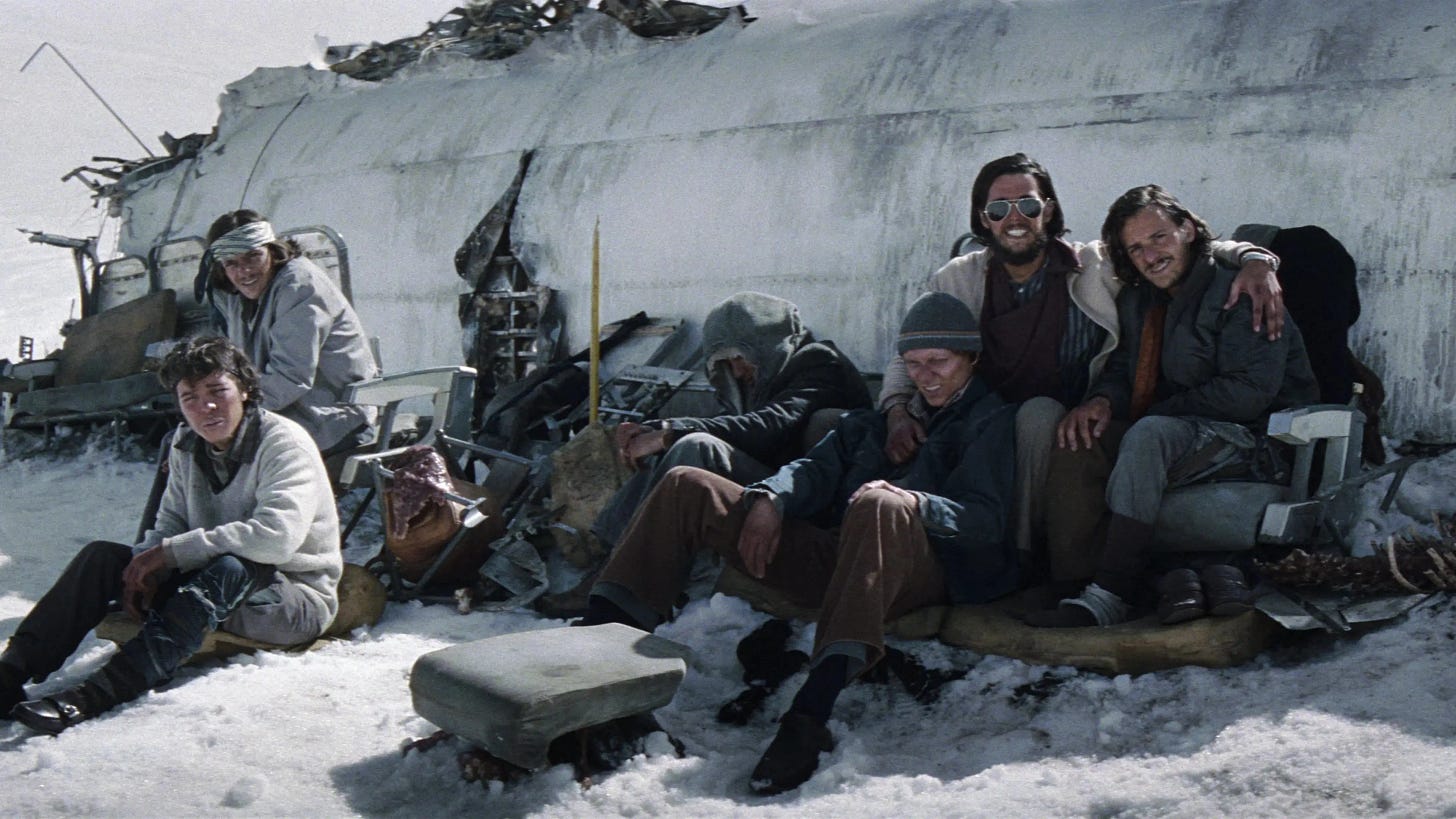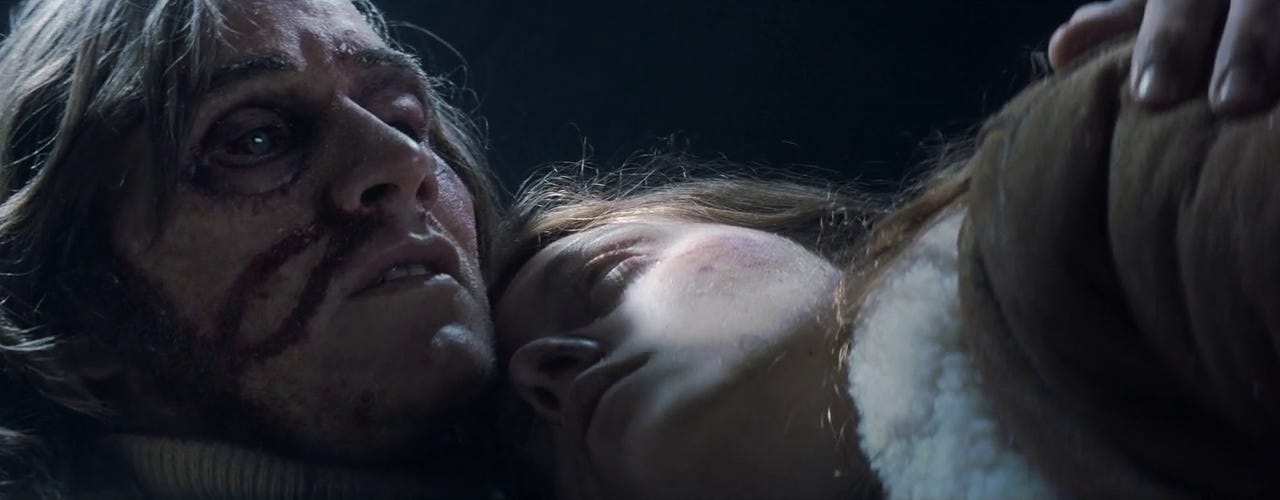Movie Review: Society of the Snow
An adaptation of a real-life nightmare fashions one of the most thrilling and intense films of last year.
I always anticipate the announcement of the Academy Award nominations with a sense of child-like enthusiasm, not only because often times films I’ve seen and enjoyed over the last year are often honored with a nomination. I also am ecstatic that the nominations often bring to my attention quality cinema that I might have missed or overlooked over the last year. With the popularization of streaming, this has become even more exciting because many of these films are often available for home consumption, which has made catching up on some of these titles a far easier task.
Such was the case when the nominations for “Best International Film” were released this week, and a Spanish film titled “Society of the Snow” was among the nominees. I had known relatively little of the film prior to seeing the title listed, but it piqued my curiosity enough to seek it out on Netflix, where it is currently streaming. I knew only two things going into the movie: it likely involved a society. And it very likely had something to do with snow. My lack of awareness as to the plot of the film became almost comical upon reading a summary, because it is a story I actually knew quite well prior to viewing the movie.
“Society of the Snow” is a dramatization of the 1972 Andes flight disaster, in which the Uruguayan Air Force was transporting a group of young rugby players and crash landed into a glacier. Many died on impact, and the remaining survivors were left to fight for survival in the harsh sub-zero climate of the Andes with minimal food or resources. The circumstances became so dire that the starving group is forced to resort to cannibalizing the deceased in order to survive. By the time the remaining 16 survivors were finally located and rescued, they had been stranded in the Andes for 72 days.
Some of you reading that summary will likely feel the premise of the film sounds very familiar. And for good reason: it is also the plot for the 1993 film “Alive”. I remember enjoying “Alive” overall, but it certainly was a very sanitized depiction of the original story. Yes, there is still cannibalism in the movie, and yes, the tragedy and horror of their isolation isn’t overlooked, but it just felt like the film, in an attempt to not feel exploitive, leaned heavily into sentimentality. It also didn’t help that the film depicted a rugby team from Uruguay with a cast of mostly American performers. Ethan Hawke was the lead in that picture, and while he is a terrific actor, he is not convincing as college-age Uruguayan rugby player.
While “Society of the Snow” essentially depicts the same scenario, it not only is more accurate to the real events as they unfolded, it also makes “Alive” look like a Saturday morning cartoon. The crash occurs within the first 10 minutes of the film, and from the moment the plane experiences turbulence, this film is a white-knuckle masterclass in building intensity and developing drama through unimaginable struggle. Not since Peter Weir’s “Fearless” have I seen a plane crash depicted onscreen that feels so uncomfortably real. The wings are torn off, the fuselage is rocketed down the mountain at an alarming velocity, those not wearing seatbelts are quickly jettisoned and ejected, never to be seen alive again. It is the type of film sequence where as soon as the fuselage halts in the snowy valley and is no longer in motion, you have to step back and remind yourself to take a breath. What is even more remarkable is if you read the details of the actual event, it is executed in the film pretty much exactly as it occurred in reality.
The film does not become any less perilous after the crash, and the breathtaking cinematography by Pedro Luque paired with the sharp direction of J.A. Bayona ensures that the suspense does not falter for the entire length of the movie. This is a 2 and a half hour picture and there was nary a moment where I felt compared to glimpse at my watch. A large part of why the film works so well is Bayona has a very clear understanding on what makes a survival thriller effective: you present a scenario or series of events that creates an opportunity for multiple action set pieces, but you fill the time in between with developing the characters and the bonds those characters develop in the face of their hardships. While the action sequences and the challenges this group faces are impressively shot and harrowing to experience as a viewer, the people are the core of this film. Bayona cast largely newer, lesser known Spanish actors in the key roles, but the chemistry the surviving members develop throughout the film is palpable, and the harsh conditions only make us as the audience want to see those bonds deepen further, as it feels like the only way they will escape their hellish reality with their lives intact.
I also think the film deserves tremendous credit for taking a story that could easily feel exploitive if it were not approached with just the right tone and pulling it off so skillfully. Despite this being a story where cannibalism very infamously occurred and where most of those aboard the plane never made it back home, “Society of the Snow” goes to great lengths to focus on the humanity of the surviving passengers and it never makes it a vehicle to indulge in the more macabre aspects. That isn’t to say there isn’t gore or disturbing imagery; they are both in the film to some degree. But that isn’t where the focus of the film lies. This is not a story of a how several people died in the Andes after an airline disaster. It is a story about how a group of men overcame an increasingly extraordinary set of harsh circumstances through relying and believing in one another so they could all live to see another day. For as bleak as the film can feel at times, it makes the moment that the surviving members finally find salvation feel unquestionably earned. There’s even a misdirect later in the film, that, while utterly heartbreaking, at no point feels manipulative. You can’t help but feel emotional because as the viewer you know the difficulties they had to overcome to reach that point.
I read that all of the remaining survivors of the 1972 Andes disaster were invited to watch the film upon release, and I am so glad they were able to view it. J.A. Bayona was clearly moved by this story and the integrity he displays in how he approaches the details is impossible to overlook. You absolutely feel the most terrifying moments and sequences in “Society of the Snow”, but even more than that, you feel for the people at the heart of the story. The best thing I can say about the film is while it is a spectacle, it never forgets to prioritize the humanity of the story over that spectacle.
10/10






